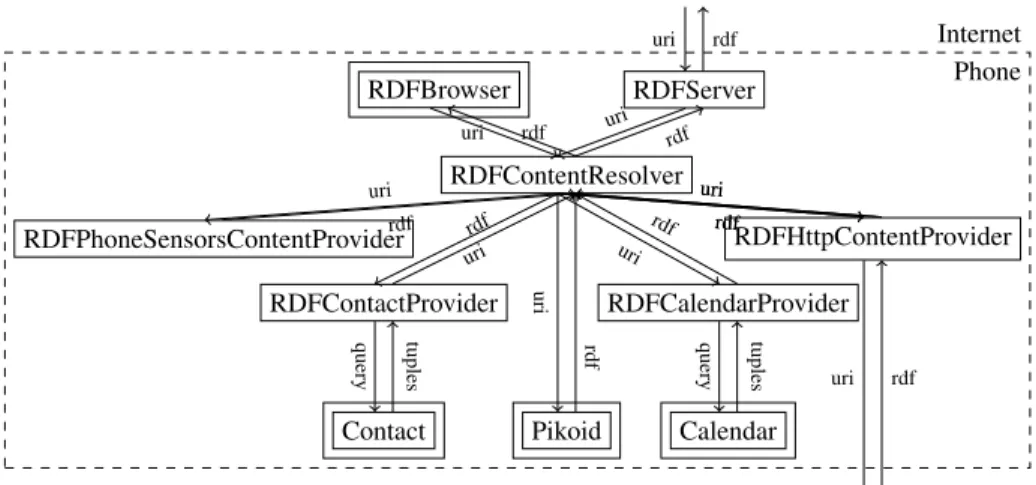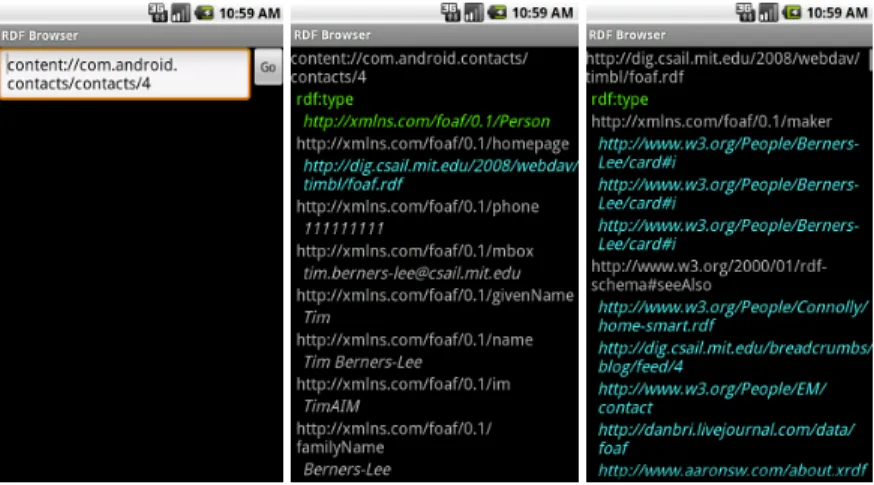A linked data framework for Android
Texte intégral
Figure




Documents relatifs
We believe that this framework will reduce the burdens of mobile developers to work with Linked Data and open up many opportunities for building applications that interact with
The LDP4j framework is one effort to fill this gap by providing a library and a set of tools that facilitate the development for read-write Linked Data applications so that they
This process has implications for the definition of an LDCache databundle; because links to other sources are followed, an LDCache databundle is not limited to a single data source
However, while some Web developers have developed notable Linked Data applications consuming and integrating different types of linked open data from the Linked Open Data Cloud
Subsequently, we present the results of our two feasibility studies, the first of which explores the ex- tent to which current linked open data sets are versioned or are amenable
Therefore, an indexing service (such as e.g., Sindice) is generally needed in order to discover existing statements from these documents as well. Ding was the first
This paper presents an approach for integrating OpenMath with RDF data for the representation of math- ematical relationships and the integration of mathematical computations
In this context, we propose abstraction and aggregation techniques to transform a basic, flat view of a potentially large set of messy linked data, into an inCloud, that is,

